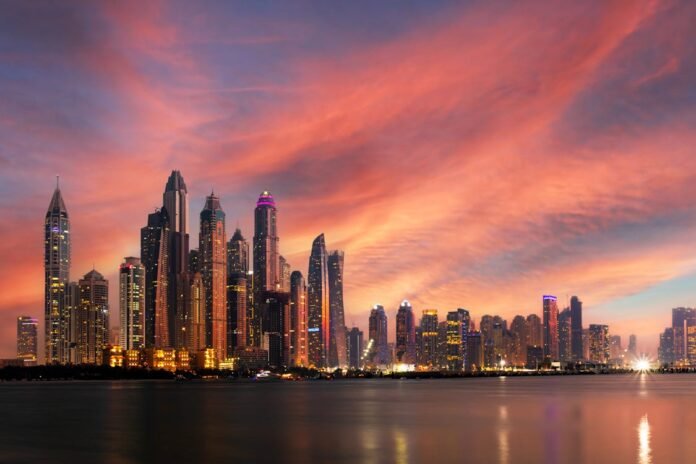Introduction:
When people think of Dubai, images of glistening skyscrapers, extravagant malls, luxury cars, and futuristic architecture often dominate the imagination. However, beyond the shining skyline and world-famous tourist attractions lies a lesser-known part of the dubai sonapur city an area that represents the other side of Dubai’s rapid development. Officially known as Muhaisnah, but commonly referred to as Sonapur (meaning “Land of Gold” in Hindi/Urdu), this district is home to tens of thousands of migrant laborers who form the backbone of Dubai’s thriving construction and service industries. While it may not appear on tourist maps, Sonapur plays a critical role in sustaining the city’s infrastructure, and understanding this hidden part of Dubai offers a more complete picture of life in the UAE.
1. The Origin and Naming of Sonapur
The name “Sonapur” was not coined by Emirati authorities but by South Asian migrant workers, predominantly from India, Pakistan, Bangladesh, and Nepal. Translated as “Land of Gold,” the name carries a sense of irony; while Dubai is indeed a land of opportunity and gold for some, the reality for most of Sonapur’s residents is far removed from luxury. The area began to grow in the early 2000s when Dubai’s economic boom demanded a massive influx of manual laborers. To house this large workforce, the city developed designated zones for labor accommodations, with Muhaisnah becoming one of the most densely populated. The name Sonapur stuck among the workers, symbolizing their hope for prosperity, even as they endured difficult conditions far from their families.
2. Living Conditions and Daily Life
Life in Sonapur is vastly different from the polished neighborhoods of Dubai Marina or Downtown. The district is characterized by rows of labor camps—large, dormitory-style buildings with shared rooms, communal bathrooms, and basic facilities. Despite ongoing efforts by authorities to improve standards, overcrowding remains a pressing issue, with some rooms housing up to 6 to 10 workers. Most of the residents work long hours under the scorching sun, often for low wages, and return to modest accommodations that offer little privacy or comfort. Yet, within this hardship lies a strong sense of community. Workers cook together, support each other emotionally, and stay connected with loved ones back home through cheap internet cafés or communal phones. Their resilience and camaraderie form the human heart of Sonapur.
3. Economic Role and Contributions
The migrant labor force housed in Sonapur is indispensable to Dubai’s economy. From building the Burj Khalifa and other megastructures to maintaining public services, cleaning roads, and working in hospitality, these individuals perform essential roles that keep the city running. Without them, the rapid urban expansion that defines Dubai’s image would not be possible. Most workers remit a significant portion of their salaries back home, helping to support entire families and even communities in their countries of origin. In this sense, Sonapur is not just a labor camp—it is an economic engine fueling both local development and global remittance economies. Despite their physical separation from the affluent parts of the city, the laborers of Sonapur are deeply woven into the fabric of Dubai’s success story.
4. Government Regulations and Reforms
The UAE government has taken several steps over the years to improve labor rights and enhance living conditions in places like Sonapur. Initiatives have included better housing standards, electronic wage protection systems to ensure timely payments, and hotlines for workers to report abuse or neglect. However, critics argue that enforcement remains inconsistent, and issues such as late salaries, excessive working hours, and substandard accommodations still exist. Advocacy groups continue to call for stricter monitoring and more transparency, urging both government bodies and private companies to prioritize the dignity and welfare of laborers. The future of Sonapur, in many ways, depends on sustained reform efforts and the global attention the issue continues to garner.
5. Social and Cultural Dynamics
Despite the hardship, Sonapur has a vibrant social life that reflects the multicultural makeup of its residents. Cricket matches in dusty lots, evening prayers in makeshift mosques, and weekend gatherings with food and music bring a sense of normalcy and joy. The area has also seen a growth in small businesses that cater to the unique needs of migrant workers—affordable restaurants serving South Asian cuisine, barber shops, second-hand clothing stalls, and money exchange centers. These micro-economies provide not only goods and services but also a sense of identity and autonomy to workers. For many, Sonapur is a temporary chapter in their life’s journey, but during their stay, it becomes a cultural mosaic shaped by shared experience and survival.
6. Human Stories Behind the Statistics
Each person living in dubai sonapur city has a story—of sacrifice, ambition, struggle, and endurance. There is the father working 14-hour shifts to educate his children back in Kerala; the young man from Dhaka who dreams of starting a business; the Nepalese cook who hasn’t seen his family in five years but sends money home every month without fail. These stories rarely make headlines, yet they reflect the immense human cost behind Dubai’s progress. By acknowledging the individuals behind the labor force, we move beyond the stereotypes and begin to appreciate the resilience and humanity of those who have built the city from the ground up.
7. The Unseen Dubai: A Necessary Dialogue
While Sonapur is not showcased in glossy travel brochures, it is as much a part of Dubai as the Burj Al Arab or the Palm Jumeirah. Ignoring it does a disservice to the city’s real narrative. As Dubai continues to market itself as a global innovation hub, it must also reckon with the ethical and social implications of its labor practices. Raising awareness about Sonapur, understanding its importance, and engaging in meaningful dialogue about reform and recognition are critical steps toward building a more equitable urban future. It is only by including Sonapur in the broader story of Dubai that we can truly appreciate the complexity, ambition, and contradictions of this unique metropolis.


